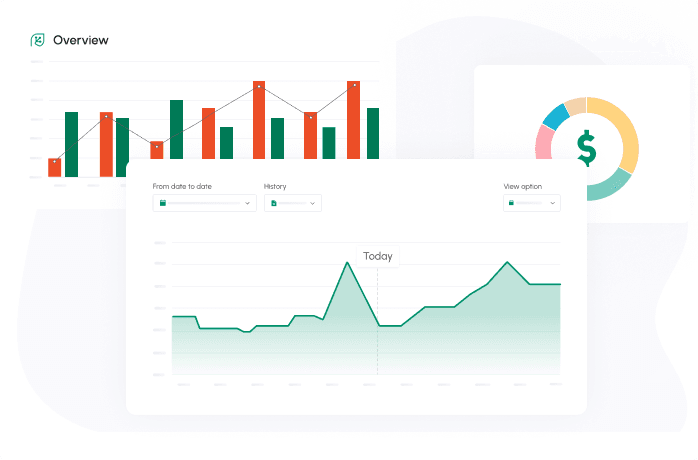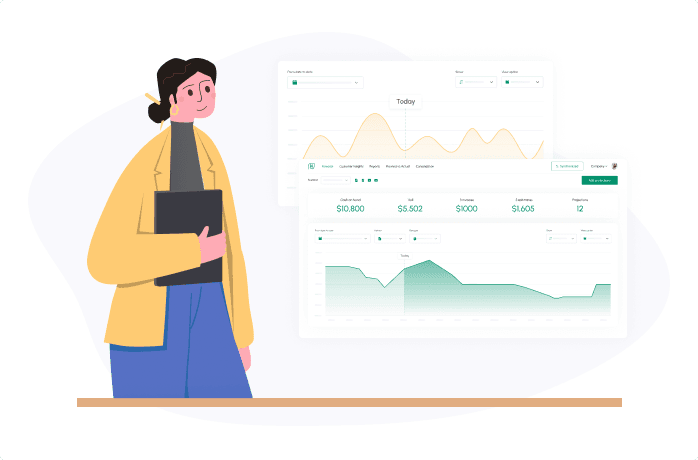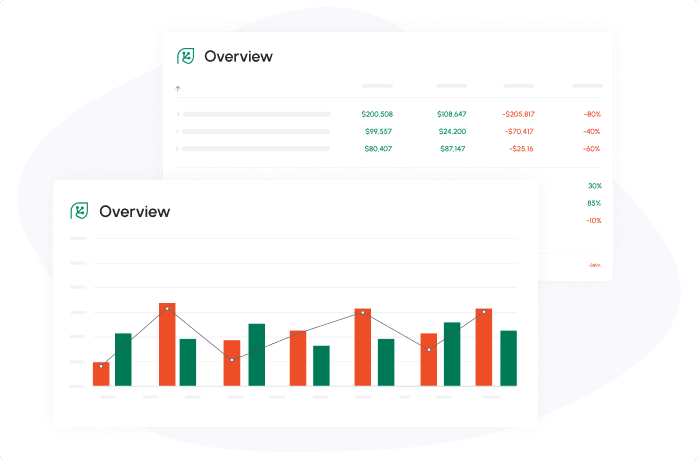

Making Tax Digital (MTD) is something new for small business owners to worry about. Your accountant should discuss this new requirement with you, but we’re going to answer a few important questions: what is MTD, how to judge your readiness for the change and steps you can take to meet new requirements.
You may find that Making Tax Digital is even beneficial to your business.
Understanding Making Tax Digital (MTD) and Its Implications
Making Tax Digital VAT for small businesses is required by all small businesses that are VAT registered. Using your online account, you’ll no longer have the option to submit a VAT return. MTD is a way to:
- Increase efficiency for businesses and individuals who need to record and declare tax
- Make it easier for businesses and individuals to submit returns
You'll use Making Tax Digital software to record transactions and submit your returns. The United Kingdom’s effort to digitize its systems. Businesses will meet tax obligations with greater ease.
As a small business, you’ll need to change the way you handle VAT. The key changes require you to:
- Submit four filings per year
- Utilize digital tools that meet MTD standards
- Potentially invest time and training into using these tools
Submitting your filing four times per year instead of once under Making Tax Digital will allow you to better control your obligations to HMRC. Many small business owners receive staggering tax bills that they cannot afford six months into their operation because they owe a significant amount to VAT.
MTD will help your business avoid these risks and streamline the way that you handle VAT.
Assessing the Readiness of Your Small Business for MTD
MTD requires small businesses to make integral changes to their operations and walk through a step-by-step process to meet compliance. Here’s a basic readiness requirement checklist for assessing your readiness:
- Did you sign up for the submission of documents under MTD?
- Did you check to ensure that you’re required to meet MTD requirements?
- Did you evaluate current systems and software for MTD compatibility?
- Did you replace non-compliant solutions with MTD-compatible solutions?
Your systems will need to meet minimum hardware requirements that can change from one software to another.
Once you have everything in place, you’ll want to review your digitization strategy. Do you have processes and procedures in place to digitize important documents? If not, you need to add that to your checklist because it will make current and future tax filing easier.
Businesses should work to find digitization solutions that allow them to scan or screenshot paper documents and have them automatically organized on the cloud.
Steps to Prepare Your Small Business for MTD
Small business taxes seem complicated at first, but if you take a step-by-step approach, you can make it easier to prepare for Making Tax Digital.
Step 1: Educate Yourself about MTD and its Requirements
Making Tax Digital has two main requirements:
- Keep digital records
- Make taxation easier
You'll need to use MTD-compatible software (more on that soon), sign up for the service and meet strict deadlines.
Signing Up for Making Tax Digital
MTD requires you to sign up, which is completed by:
- Sign up for a Government Gateway user ID or log into the account
- Follow the prompts on the screen
- Wait 72 hours for a verification email
- Verify and wait for the HMRC to approve your ability to use MTD and begin submitting VAT returns
Do not wait too long to sign up because you can miss the deadline.
Meet Deadlines
All businesses must comply with MTD for VAT and submit their returns using MTD software starting in April 2022.
MTD requirements for income is the second phase of Making Tax Digital and has requirements that must be met by:
- 6 April 2026 for businesses with an annual income of £50,000 or more
- April 2027 for businesses with an annual income of £30,000 or more
Your business may be exempt from needing to meet these requirements or have the ability to request exemptions. You can find more information on Making Tax Digital at:
- https://www.gov.uk/government/publications/vat-notice-70022-making-tax-digital-for-vat/vat-notice-70022-making-tax-digital-for-vat
- https://www.gov.uk/government/publications/making-tax-digital/overview-of-making-tax-digital
Note: You must keep six years of records, according to the HMRC.
Step 2: Evaluate Your Current Financial Systems and Software
Xero Making Tax Digital compliance integrations ensure that your business meets the new requirements under the MTD. Your financial system and software must be MTD compatible if you are to meet the requirements.
How do you know if it’s compatible?
Gov.UK has an official page with all software solutions that meet compliance requirements that you can find here.
Major players in the industry have long had this feature integrated, including:
- Xero
- Sage
- Others
Step 3: Organize and Digitize Your Financial Records
Making Tax Digital will require you to organize and digitize your financial records. You can begin doing this by following these steps:
- Scan all copies of paper documents and store them in an appropriate folder, such as “expenses” or in “invoice” folders that make it easy to organize.
- Keep all of your paper records for the time being.
- Keep copies of the documents on your accounting software or in the cloud.
Cloud-based storage and backup solutions are often the best for working on document digitization. If you choose these platforms, you’ll benefit from:
- Easy access for you and your accountant
- Data encryption to keep your file safe
- Data redundancy to eliminate the risk of data loss
If you feel more comfortable, you can also keep a local backup of these files. Local backups and cloud-based options offer you the greatest level of data redundancy.
Step 4: Implement MTD-Compatible Software and Tools
Making Tax Digital requires you to use the software (listed in a previous section) to submit your key VAT data. You'll need to use a similar approach for your income in the future. You'll want to:
- Review all of your accounting systems and software
- Eliminate and replace solutions that are not MTD-compatible
- Install MTD-compatible alternatives
Many of the solutions will import your previous data and have an easy way for you to begin digitizing your documents. Automation and the ability to submit your VAT and income online will make tax reporting easier and help you keep greater control over your finances, too.
Conclusion
Making Tax Digital is an arduous process at first, but it requires just a few steps for businesses to begin using it. Once you sign up for your account, review your systems, put new solutions in place and digitize your data, you’ll find that it makes VAT reporting much easier.
In a few years, MTD will also include income and reduce the tax burden on businesses and landlords across the UK.
Related posts:
You may be interested:
New:











